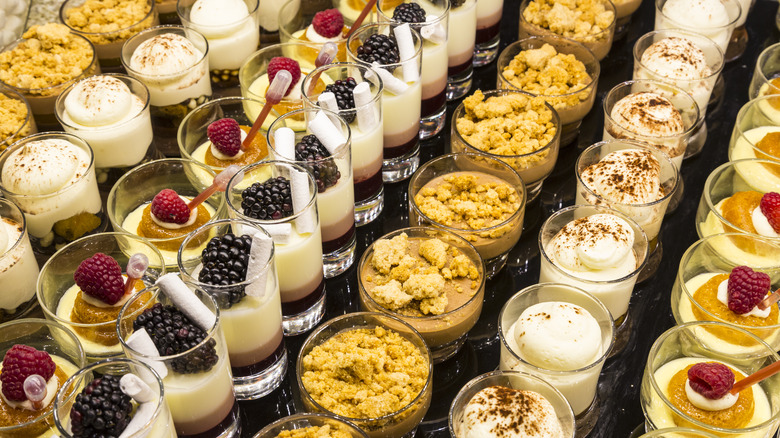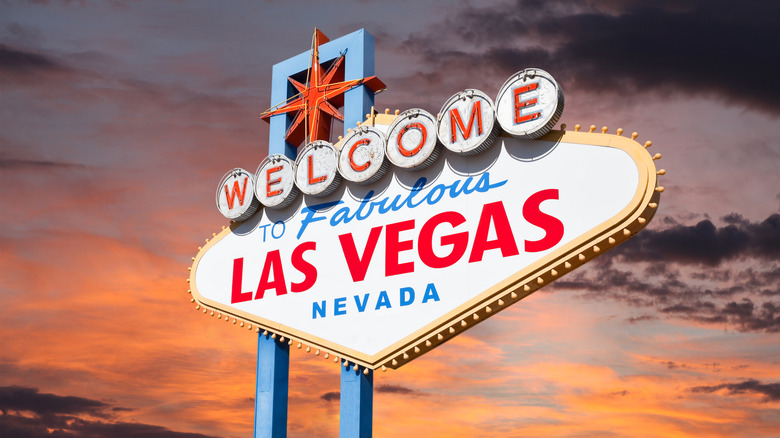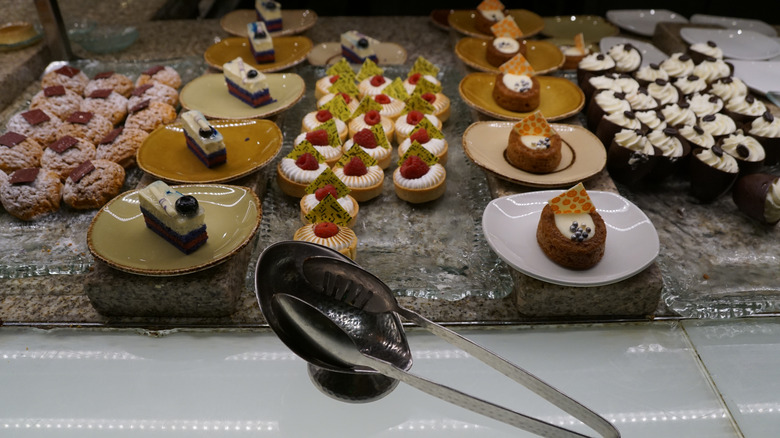How Buffets Became A Staple Of The Las Vegas Strip
Buffets are, for many people, something of a guilty pleasure, somewhere you love eating but don't necessarily like admitting to. And while the origins of the buffet are actually quite classy, the age of Golden Corral has somewhat dimmed their star in the intervening decades. But there's one place with which buffets are associated more than any other: Sin City itself, Las Vegas. Today, Las Vegas may not be the home of America's largest buffet, but there's no denying the longtime association between the two.
But where did the origins of the link between Las Vegas and buffets come from in the first place? In order to get there, you have to turn back the clock to the 1940s, when one casino owner's desire to keep guests from leaving the premises in the wee hours of the night drove him to toss out a bunch of cold cuts and hope for the best. In the process, he spawned an entire trend that would become as iconically Las Vegas as casinos themselves — even if now the Vegas buffet star has dimmed considerably.
The first modern buffet was designed to keep people from leaving the casino
Large food spreads aren't new to human society; the art of the smorgasbord, the progenitor of the modern buffet, dates to the 14th century. But what we think of as buffets today — varied dishes on offer next to each other for one all-inclusive price — didn't exist until 1946. That's when Beldon Katleman, owner of the El Rancho Vegas casino (actually the first casino on the Las Vegas strip), put out some food to keep guests from leaving the building during the midnight hours to get something to eat. The "Buckaroo Buffet" was born; its first offerings were a mix of cold cuts and hot foods, all for the low-low price of exactly $1, and with a bit of a curious flyer that proclaimed the buffet was "to appease the howling coyote in your innards."
Katleman wasn't trying to make money on his buffet, though — and that's good because it was a loss leader. The point was simply to keep people gambling for as long as possible, and to that end, it worked like an absolute charm. The El Rancho Vegas was so successful with its new food gamble that other casinos started copying it with quick, cheap, and relatively simple buffet spreads designed to keep people from exiting the premises. The rock-bottom prices of Vegas casino buffets continued for decades (as late as the 1970s, the highly-regarded Caesar's Palace buffet was still $2.75) before eventually starting to rise in the 1980s.
Vegas buffets morphed into superbuffets, then disappeared
But this is Vegas, baby, Vegas, the city of perpetual excess, and eventually, that would extend to buffets just as surely as it does everything else. Though the initial casino buffets were pretty simple, decades later, they would become the same towering extravaganzas that everything else in Vegas is known for. The Rio Las Vegas kicked things off in 1993 with the first of the "super buffets" of 200 or more items, and pretty much every other big-name casino (the Bellagio, Caesar's Palace, The Cosmopolitan of Las Vegas, the Wynn Las Vegas, the Horseshoe Las Vegas) followed suit. Unsurprisingly, the prices went up quite a bit, as did the quality of the offerings.
It wasn't a trend built to last, though; today, Las Vegas buffet culture is falling by the wayside. Only eight casinos on the strip currently contain a buffet — the rest have transitioned to pricey restaurants or food halls — and the remaining are extremely high-end affairs in the neighborhood of $100 per person. Sure, COVID-19 didn't help casino buffets stay afloat, but one could just as easily argue that the end of the buffet era in Las Vegas is largely due to casinos moving away from the trend's inexpensive roots. Buffets were always loss leaders, but they may have survived if the overhead wasn't so high that they couldn't survive an event like the pandemic.


